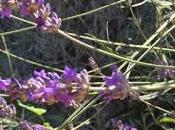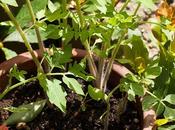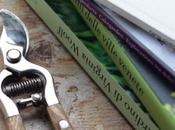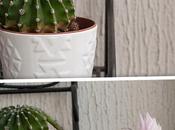“L’amore per la natura deve essere universale,
non solamente per l’uomo; ogni animale ha diritto alla sua vita libera, ogni pianta è amica, non basta semplicemente abbeverarci alla sua bellezza. Un meraviglioso dono che deve essere custodito e curato con amore”.(1)
(1)libera trascrizionedi un pensiero di Libereso Guglielmi
***
” The love of nature has to be universal ,
not only for humans; every animal has a right to its own free life, every plant is a friend. We cannot only enjoy its beauty. A wonderful gift that should be treasured and cared for with love. ” (1)
(1) free transcription from a thought of Libereso Guglielmi

Era uso comune le sere di primavera fare un pasto a base di prebuggiun. L’orto era un lusso che si poteva permettere solo chi aveva un pozzo che portava acqua nel proprio terreno e le verdure se non raccolte direttamente nei campi venivano acquistate dagli ortolani. Le donne e le bambine si recavano allora nei prati e nelle rive de “il cian” in località Costa o nei luoghi più umidi dove sapevano di poter trovare il cresciun, verso i piani di Celle, “sotto-caniggiu” vicino al ruscello. Riempivano i loro grembiuli, ben attente ad arrivare sul posto prima della vicina di casa per raccogliere le erbette più buone. Giuseppina, Caterina, Rosetta, rammentano l’abbondanza delle erbe selvatiche commestibili, il decespugliatore non era ancora arrivato, l’erba si tagliava sovente e con la falce a mano per tenere i campi sempre puliti e produttivi. Le buone erbe avevano il tempo di crescere ed ingrossare le radici grazie anche alle piogge che cadevano un tempo più copiose. Nel ricordo e salvaguardia di questa antica tradizione il Comune di Celle Ligure certifica il PREBUGGIUN cellasco distinguendolo dalle altre realtà territoriali. Il suo nome è identificato dalla trascrizione della fedele pronuncia dialettale e 7 sono le erbe spontanee che lo compongono.
Per le peculiarità territoriali, climatiche e di composizione del terreno in generale più ricco di azoto, nelle campagne delle prime alture cellesi si trovano più comunemente le seguenti piante commestibili:
Tra le erbe maggiormente diffuse troviamo il gattalerve (Reichardia picroides) e il couetto (Silene vulgaris). Entrambe molto apprezzate in quanto stemperano il gusto più forte delle altre erbe e la loro presenza aumenta in proporzione, la bontà della preparazione culinaria.
***
It was common practice in spring to do evening meals based on ‘prebuggiun’. The vegetable garden was a luxury that only those owning a shaft carrying water to their soil could afford and vegetables, if not collected directly in camps, were purchased by gardeners. Once women and girls were going to the fields and along the banks of the ” cian” in a village called Costa or in damp places where they knew they could find the ‘cresciun’, towards Piani of Celle, “sotto-caniggiu” by the stream. They used to fill their aprons, very eager to arrive on the scene before their neighbors in order to collect the best herbs. Giuseppina, Caterina and Rosetta recall the abundance of edible wild herbs, the brush cutter didn’t exit yet, the grass was cut often and by hand with a scythe to keep the camps clean and always productive. The good herbs had time to grow and swell their roots also thanks to the rains that used to fall more abundant. In memory and safeguard of this ancient tradition the municipality of Celle Ligure certifies the ‘prebuggiun’ of Celle distinguishing it from that from other territories. Its name is identified by the faithful transcription of its dialect pronunciation and 7 are the wild herbs that compose it.
For territorial, climatic and soil composition specifics in general richer in nitrogen, in the countryside of the foothills of Celle are most commonly found the following edible plants:
Among the most widely used herbs we find the ‘gattalerve’ (Reichardia picroides) and the ‘couetto’ (Silene vulgaris). Both mostly appreciated for their diluting the stronger taste of other herbs and because their presence increases in proportion the goodness of the culinary preparation.

boraxe – Borago officinalis
marva – Malva sylvestris
armuassa – Raphanus raphanistrum
gattalerve – Reichardia picroides
pimpinella – Sanguisorba minor
couettu – Silene vulgaris
crescion – Sonchus oleraceus
Il mazzetto prende il nome, specialmente nelle terre circostanti il genovesato, di preboggiòn, (in dialetto leggesi prebuggiun). Per alcuni il preboggiòn si identifica con una pietanza in particolare, una minestra o il misto cotto di verdure. Il nome ha diverse interpretazioni etimologiche alcuni ne fanno derivare il significato dalla storpiatura del termine pe-bouggî, per-bollire, una credenza popolare racconta invece che in epoca di crociate, alcuni valorosi si occuparono di reperire erbe spontanee per curare il condottiero Goffredo di Buglione Da qui pe- buggiun. Raccolto principalmente dalle donne di casa, da inizio ’800 ha fatto la comparsa sui mercati cittadini portato dalle besagni-e, venditrici di ortaggi provenienti dalle più fertili terre del Bisagno. In dialetto ligure il negozio di frutta e verdura è chiamato besagnino e ancor oggi su qualche banco dell’antico mercato Orientale situato nel cuore del capoluogo ligure, si possono trovare i caratteristici mazzetti misti di erbe di campo costituiti secondo la disponibilità del luogo di raccolta e la stagione.
***
The bunch takes, especially in the lands surrounding Genoa, the name of ‘preboggiòn’ (prebuggiun as read in the local dialect). For some people the ‘preboggiòn’ is identified with a particular dish, a soup or a mix of cooked vegetables. The name has various etymological interpretations, some people make derive its meaning from the mispronunciation of the word ‘pe-bouggî’ to-boil, one popular belief says instead that in the era of the Crusades, some valiant occupied in finding herbs to cure their leader Goffredo di Buglione, from this ‘pe-buggiun’ (for Buglione). Collected mainly by the women of the house, from the beginning of ’800 it made its appearance on the city markets carried by the ‘besagni-e’ citiz, women selling vegetables from the most fertile lands of the Bisagno. In the Ligurian dialect the shop of fruits and vegetables is still called ‘besagnino’ and even today on some stands of the ancient market Orientale, located in the heart of Genoa, it’s still possible to find the characteristic bunches of mixed field herbs made according to the availability of the place of collection and the season.

Libretto prebuggiun scaricabile qui
Questo fine settimana si è svolto nel Comune di Celle Ligure il corso sul riconoscimento delle erbe di campo organizzato dall’ufficio agricoltura. Accompagnati da Simonetta Chiarugi, quasi cento partecipanti hanno avuto modo di riappropriarsi del sapere della tradizione e al termine del percorso è stata offerta la possibilità di degustare con prelibatezze culinarie il prezioso raccolto.
***
Last weekend in the town of Celle Ligure took place a workshop on the recognition of the wild herbs organized by the agriculture office. Accompanied by Simonetta Chiarugi, almost one hundred participants were able to regain possession of the knowledge of the tradition and at the end of the workshop had the chance to sample with culinary delights the precious crop.






